 Our main temple has 9 shrines in its complex. The main shrine of our temple is Lord Venkateshwara along with his consorts Sridevi, Bhudevi and Dwara-Palakas ( Jaya and Vijaya). The temple consists of both Vaishnavite ( i.e. people who worship Lord Vishnu ) and Shaivite ( i.e. people who worship Lord Siva) deities. Given below is a brief description of each temple. Please click on the tabs below.
Our main temple has 9 shrines in its complex. The main shrine of our temple is Lord Venkateshwara along with his consorts Sridevi, Bhudevi and Dwara-Palakas ( Jaya and Vijaya). The temple consists of both Vaishnavite ( i.e. people who worship Lord Vishnu ) and Shaivite ( i.e. people who worship Lord Siva) deities. Given below is a brief description of each temple. Please click on the tabs below.
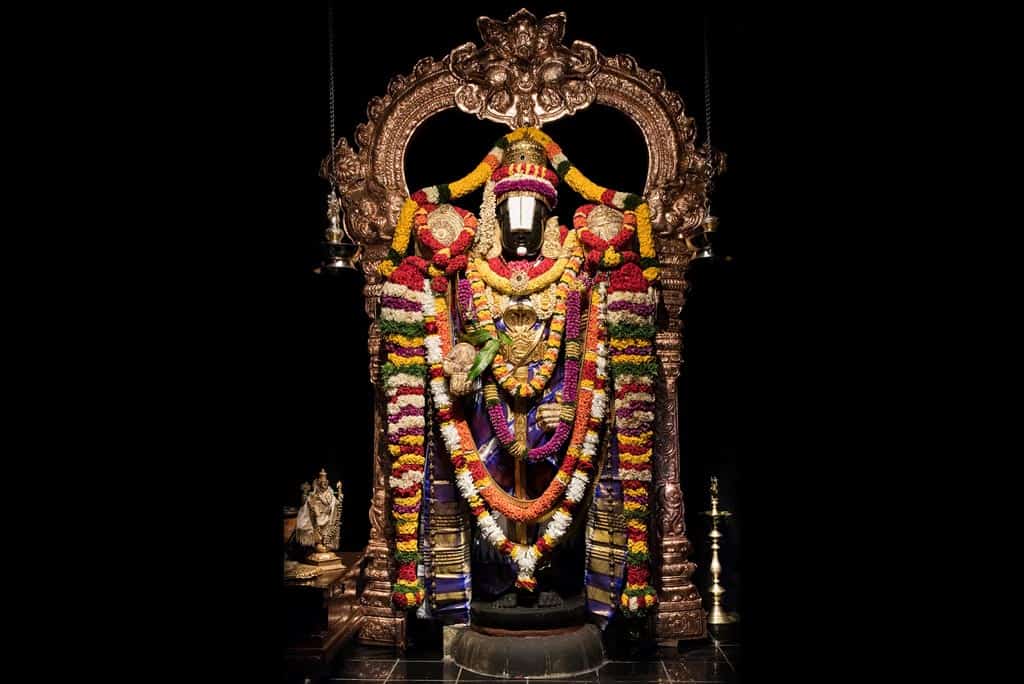 Lord Sri Venkateswara is also known as Balaji, Srinivasa, or Vishnu. According to Vedas he is called as the “Kaliyuga Pratyaksha Devata” (the self incarnated – GOD for this era). His abode is known as ‘Vaikuntam’. His main shrine is at Tirumala (Tirupati) and is the holiest place and is also the world’s largest and richest temple. On an average 200,000 devotees a day visit Tirumala for having the darshan (glimpse) of the almighty throughout the year.
Lord Sri Venkateswara is also known as Balaji, Srinivasa, or Vishnu. According to Vedas he is called as the “Kaliyuga Pratyaksha Devata” (the self incarnated – GOD for this era). His abode is known as ‘Vaikuntam’. His main shrine is at Tirumala (Tirupati) and is the holiest place and is also the world’s largest and richest temple. On an average 200,000 devotees a day visit Tirumala for having the darshan (glimpse) of the almighty throughout the year.
Vehicle – Garuda (Eagle)
Holy Places – Tirumala (Tirupati)
Nitya Aradana (Daily Rituals) – Subrabhatam, Thomala Seva, Sahasranama Archana, Maha Nivedana, Arathi.
Festivals – Brahmotsavam (Navaratri), Pushpayagam, Teppotsavam (boat festival), Phoolangi Seva, Sahasra Kalasa Abhishekam, Vaikunta Ekadasi.
 Sridevi is also known as Lakshmidevi or Padmavathi. She is the consort of Lord Vishnu. She is Mother of the Universe. She is the Goddess of Wealth in all respects, and thus is known as Astalakshmi (8 forms of Lakshmi: Adilakshmi, Dhanyalakshmi, Dhairyalakshmi, Gajalakshmi, Santanalakshmi, Vijayalakshmi, Vidyalakshmi, and Dhanalakshmi).
Sridevi is also known as Lakshmidevi or Padmavathi. She is the consort of Lord Vishnu. She is Mother of the Universe. She is the Goddess of Wealth in all respects, and thus is known as Astalakshmi (8 forms of Lakshmi: Adilakshmi, Dhanyalakshmi, Dhairyalakshmi, Gajalakshmi, Santanalakshmi, Vijayalakshmi, Vidyalakshmi, and Dhanalakshmi).
Holy Places – Tiruchanur or Alamelu Mangapuram
Abhishekam every Friday morning
Festivals – Lakshmi Jayanthi, Varalakshmi Vratham, Deepavali
 Bhudevi is also known as Sri Andal or Godadevi. She is Goddess of Earth and is known best for her patience and forgiveness because she tolerates any sort of things performed by humans (e.g. walking, jumping, digging, spitting, etc.). She is usually prayed before construction of any structure (Bhoomi puja) and thereby requesting her to shower her blessings and also excuse us for hurting her.
Bhudevi is also known as Sri Andal or Godadevi. She is Goddess of Earth and is known best for her patience and forgiveness because she tolerates any sort of things performed by humans (e.g. walking, jumping, digging, spitting, etc.). She is usually prayed before construction of any structure (Bhoomi puja) and thereby requesting her to shower her blessings and also excuse us for hurting her.
Holy Places – Sri Valliputtur
Abhishekam once a month on Sunday morning
Festivals – Dhanurmasam Puja, Goda Kalyanam
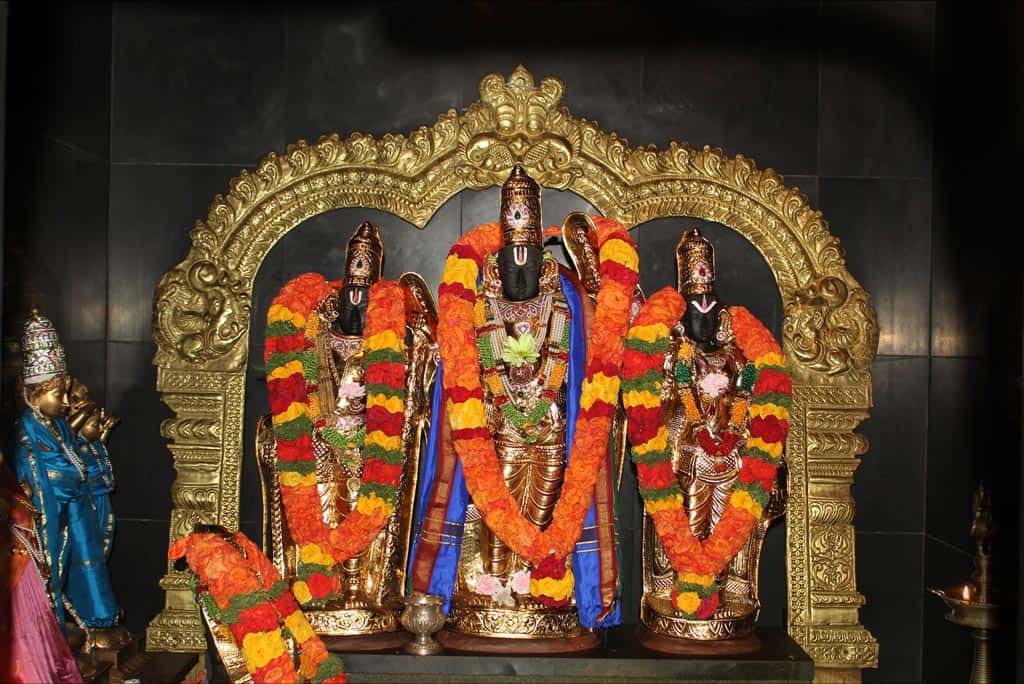 Sri Rama is the seventh incarnation of Lord Vishnu. He is best known for his preaching to the world of ONE word, ONE goal, ONE woman. His parivaar (family) consists of Sita devi (his consort), Lakshmana (his devoted brother), and Hanuman (the supreme devotee who has incarnated Lord Rama, Sita, and Lakshmana in his heart; he is also known for his extraordinary strength, courage, and devotion).
Sri Rama is the seventh incarnation of Lord Vishnu. He is best known for his preaching to the world of ONE word, ONE goal, ONE woman. His parivaar (family) consists of Sita devi (his consort), Lakshmana (his devoted brother), and Hanuman (the supreme devotee who has incarnated Lord Rama, Sita, and Lakshmana in his heart; he is also known for his extraordinary strength, courage, and devotion).
Holy Places – Ayodhya, Bhadrachalam
Abhishekam once a month on Sunday morning
Festivals – Sri Rama Navami, Dussehra, Akhanda Tulasi Ramayana Parayanam, Rama Pattabhishekam, Sri Hanuman Jayanthi
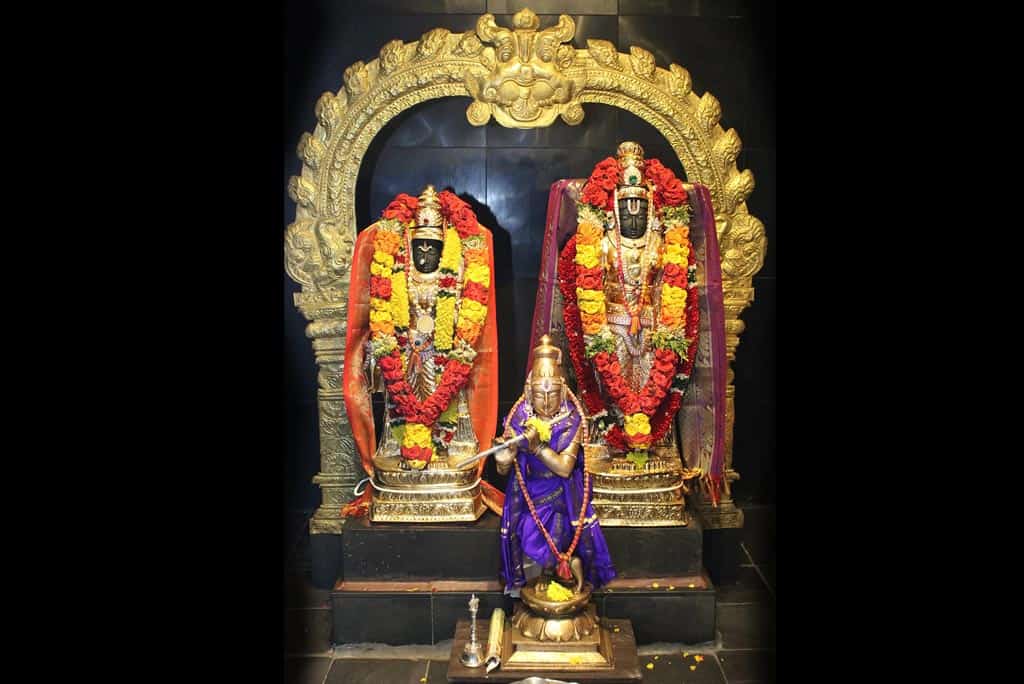 Krishna is the eighth incarnation of Lord Vishnu. He is the God of Love. He has given to humanity the sacred nectar of Bhagavad Gita which describes and answers any questions/doubts that an individual can have. Radha is a great devotee who dedicated her mind only for Lord Krishna and set an example that Jivatma (Radha/We) and Paramatma (the Lord) can become one.
Krishna is the eighth incarnation of Lord Vishnu. He is the God of Love. He has given to humanity the sacred nectar of Bhagavad Gita which describes and answers any questions/doubts that an individual can have. Radha is a great devotee who dedicated her mind only for Lord Krishna and set an example that Jivatma (Radha/We) and Paramatma (the Lord) can become one.
Holy Places – Mathura, Udupi, Guruvayoor
Abhishekam once a month on Sunday morning
Festivals – Krishna Janmastami
 Lord Shiva is the supreme being functioning as the destroyer of ego and illusion, and the material universe at the end of each cycle of creation. He is also known as Rudra and is worshipped in the form of a Linga, which represents the dissolution and unification of all forms into one undifferentiated reality.
Lord Shiva is the supreme being functioning as the destroyer of ego and illusion, and the material universe at the end of each cycle of creation. He is also known as Rudra and is worshipped in the form of a Linga, which represents the dissolution and unification of all forms into one undifferentiated reality.He is worshipped all over the world with great devotion for he grants the wishes of devotees and is very easy to be pleased for his love upon us as a parent. He is the cause of destruction i.e. bad for good. His abode is known as ‘Kailasam’. On earth (Bhu-Kailasam) is at Kedarnath.
Vehicle – Nandi (Bull)
Holy Places – There are 12 holy places known as ‘Dwadasa Jyothirlingams’. They are: Somanathan (Saurastra), Mallikarjuna (Sri Sailam), Mahakalyam (Ujjain),
Om karam (Parameshwaram), Kedarnath (Himalaya), Bhimasankaran (Dakani), Vishveswara (Varnasi), Triambakam (Goutami), Paralyam (Vaidyanath), Baidyanatham (Darukavanam), Rameshwaram (Sethu Bandan), Siva (Gasmesham)
Abhishekam daily morning and evening.
Festivals – Maha Sivaratri, Siva Sahasra Kalasa Abhishekam, Siva Parvathi Kalyanam, Siva Annabhishekam, Shravan/Karthik Somvar.
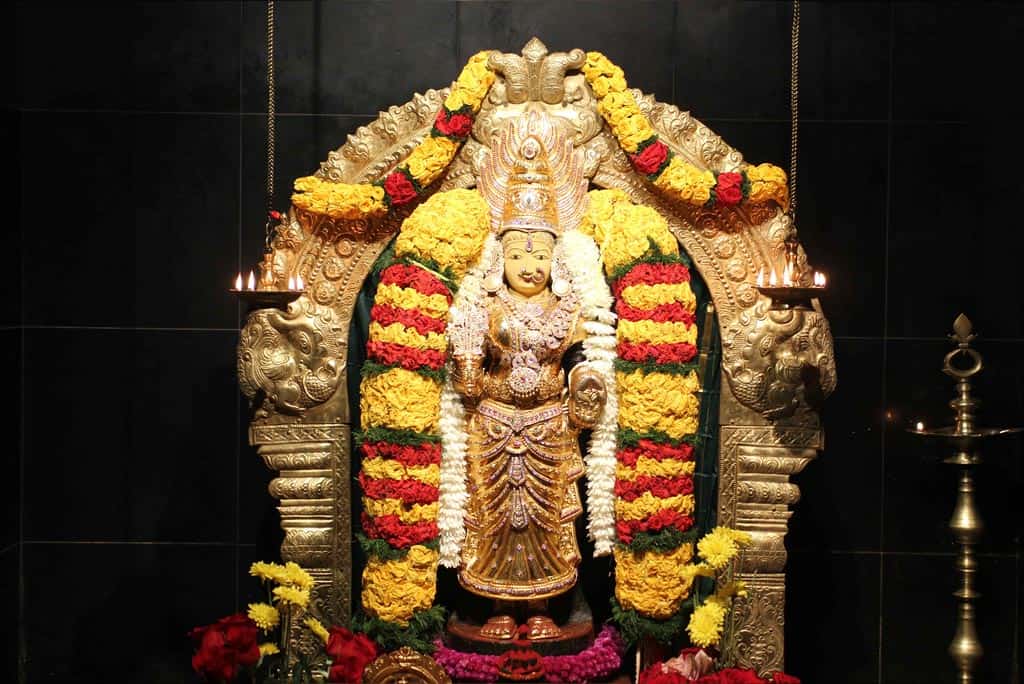 The worship of Goddess Durga is very popular among Hindus. Goddess Durga represents the power of the Supreme Being that preserves moral order and righteousness in the creation. Durga also personifies ‘shakti'(energy).She is also known as Mahakali, Tara, Tripur Sundari, Raj-Rajeshwari, Chinna, Tripur Bhairavi, Alakshmi, Balga Mukhi, Matangi, and Lakshmi. She is more commonly known as Durga-Devi. She is the consort of Lord Siva.
The worship of Goddess Durga is very popular among Hindus. Goddess Durga represents the power of the Supreme Being that preserves moral order and righteousness in the creation. Durga also personifies ‘shakti'(energy).She is also known as Mahakali, Tara, Tripur Sundari, Raj-Rajeshwari, Chinna, Tripur Bhairavi, Alakshmi, Balga Mukhi, Matangi, and Lakshmi. She is more commonly known as Durga-Devi. She is the consort of Lord Siva.
Abhishekam every morning.
Vehicle – Simham (Lion)
Festivals – Navaratri
 Ganesha is also known as Vigneshwara, Vinayaka, or Pillaiyar. He is elder son of Lord Siva and Parvathi. He is the chief for the devas (Gods). Before the start of any ritual/ sacrifice/ work He is the foremost one to be worshipped and offered prayers and only then continue with the activity to be started. The belief behind this being that, he safe guards the premises and protects us from the evil forces.
Ganesha is also known as Vigneshwara, Vinayaka, or Pillaiyar. He is elder son of Lord Siva and Parvathi. He is the chief for the devas (Gods). Before the start of any ritual/ sacrifice/ work He is the foremost one to be worshipped and offered prayers and only then continue with the activity to be started. The belief behind this being that, he safe guards the premises and protects us from the evil forces.
Vehicle – Mooshika (Rat)
Abhishekam every month on Sankata Hara Chaturthi.
Festivals – Ganesh Chaturthi, Ganesh Nimajjan
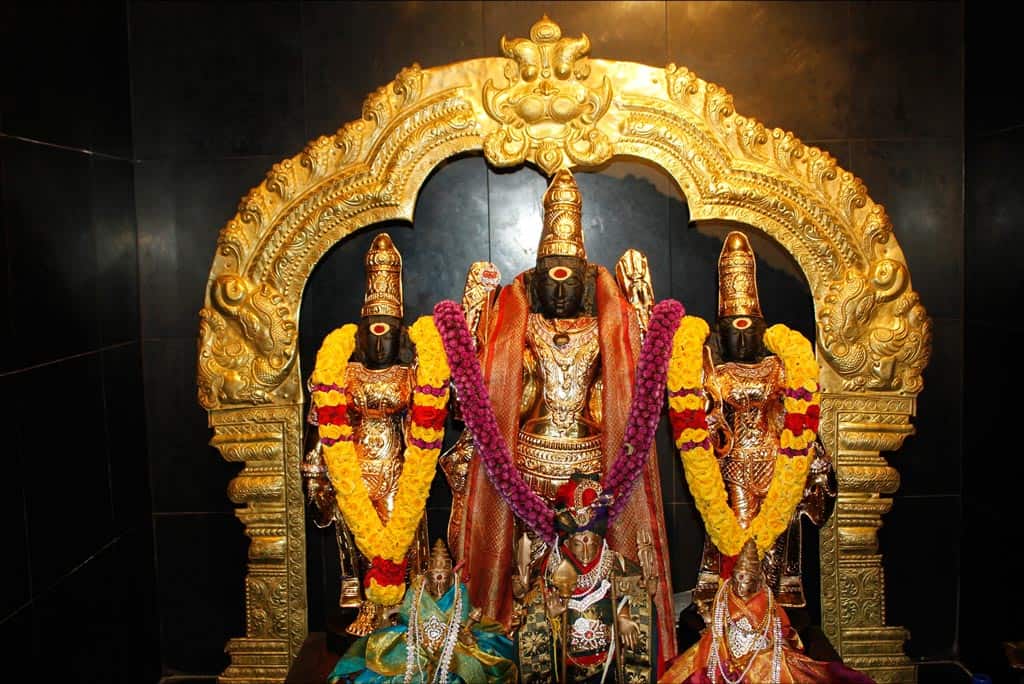 He is also known as Murugan or Karthikeya. He is younger son of Lord Siva and Parvathi. He is the Defence minister for the devas (Gods). He is very well known for his intelligence, strength and Valor. He leads the Good against Bad. His Consorts are Valli and Devasena.
He is also known as Murugan or Karthikeya. He is younger son of Lord Siva and Parvathi. He is the Defence minister for the devas (Gods). He is very well known for his intelligence, strength and Valor. He leads the Good against Bad. His Consorts are Valli and Devasena.
Vehicle – Mayuram (Peacock)
Abhishekam on Shashti and Kruthika Nakshatara
Holy Places – Palani, Tirutani, Swami Malai, Tirruchandur, Palamrudu, Sholai, Tirupurakundaram
Festivals – Adi Krithika, Skanda Shashti, Valli Kalyanam
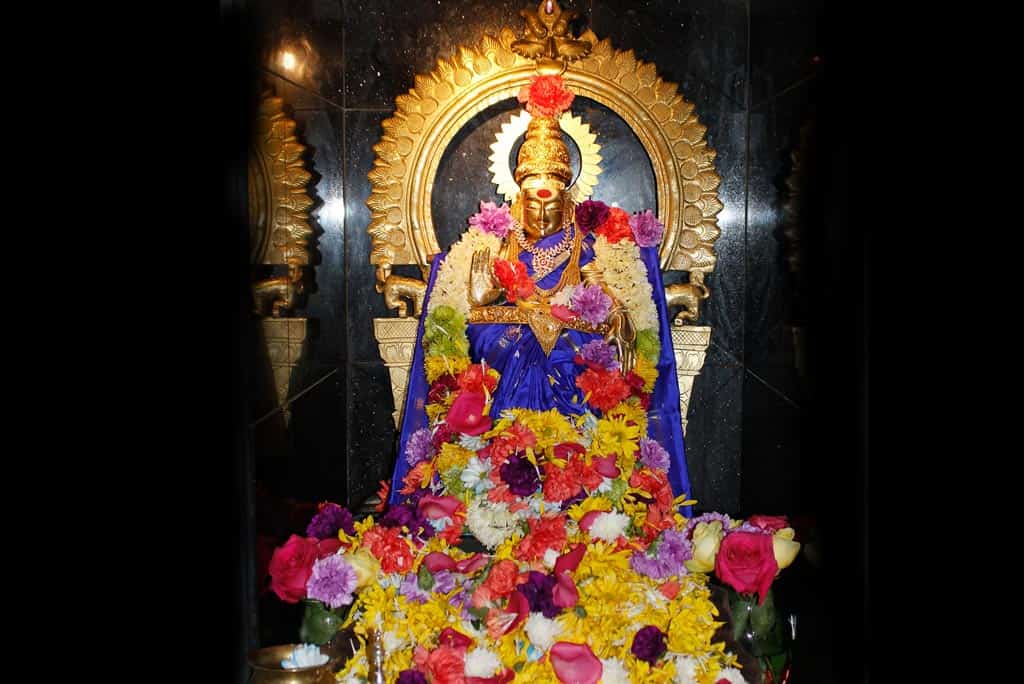
Swamy Ayyappa, also called as Manikandan, is an human incarnation of God to get rid of demons and difficulties from the lives of good mankind. He’s believed to the son of Lord Vishnu and Lord Siva, the main powers of the Universe, and with that context, He holds the title of Hariharasuthan.The presence of Swamy Ayyappan in the world is to protect good mankind and believers of God from the evil effects of Kaliyuga, hence He bears the name Kaliyugavaradhan. The blissful song Harivaraasanam explains the importance of Swamy Ayyappan in this world for all humans. Recital of this song is to remind Swamy about His achievements and protection to mankind, and to seek His alertness and care.
Vehicle – Puli (Tiger)
Abhishekam every month on Sankramanam day.
Festivals – Makara Sankrathi, 18 Padi Pooja
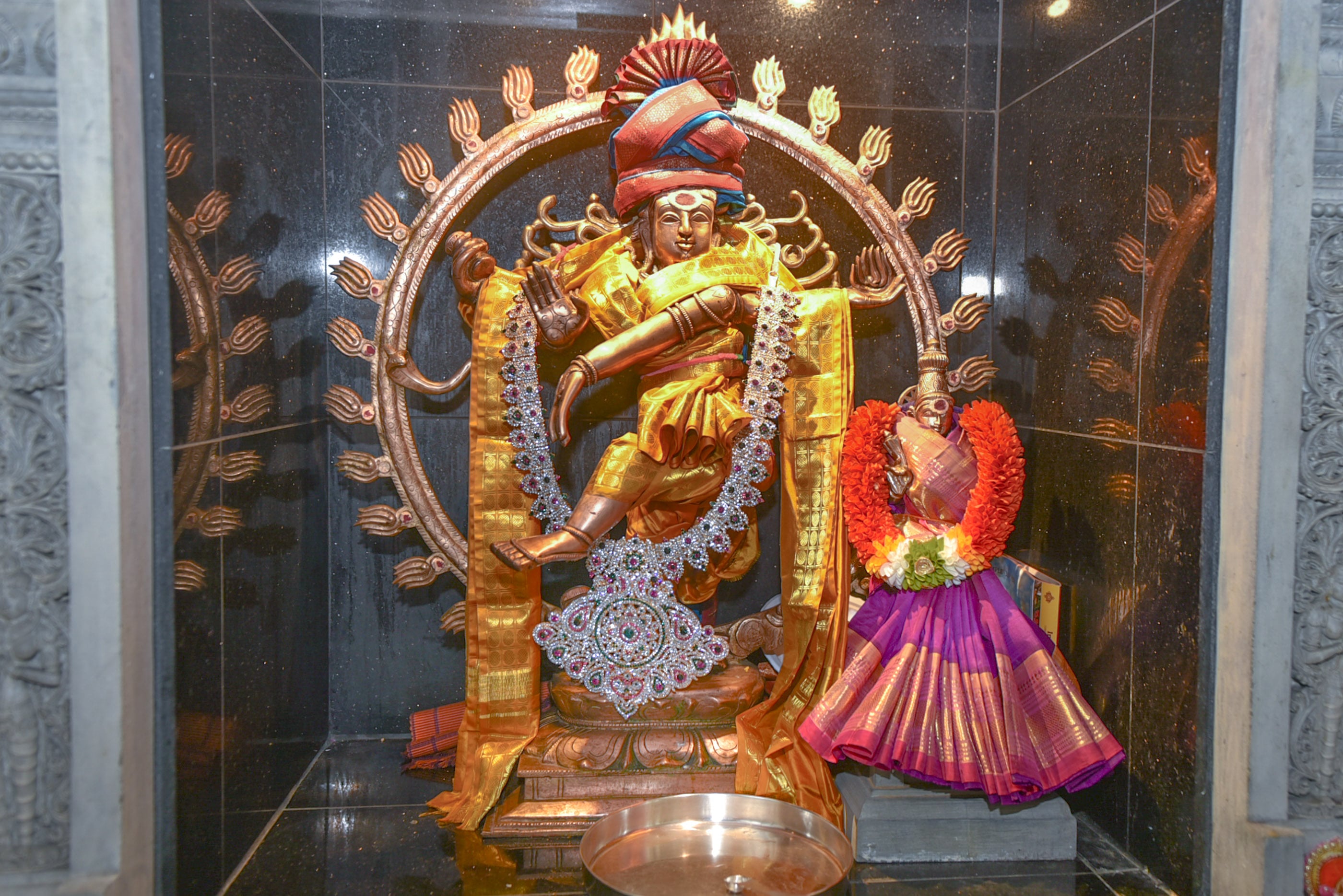
The significance of the Nataraja (Nataraj) sculpture is said to be that Shiva is shown as the source of all movement within the cosmos, represented by the arch of flames. Worshipping Shiva at this time is akin to worshipping all the powers of Shiva, for this is the time when all the gods are believed to have assembled on Kailash to lose them in the ecstasy of Nataraja’s dance. He dances the dance of creation, the dance of destruction, the dance of solace and liberation. Beneath his left foot ignorance is crushed; from his head springs the life-giving waters. Arudra Darshan celebrates this ecstatic dance of Lord Shiva.
Festivals – Arudra Darshanam
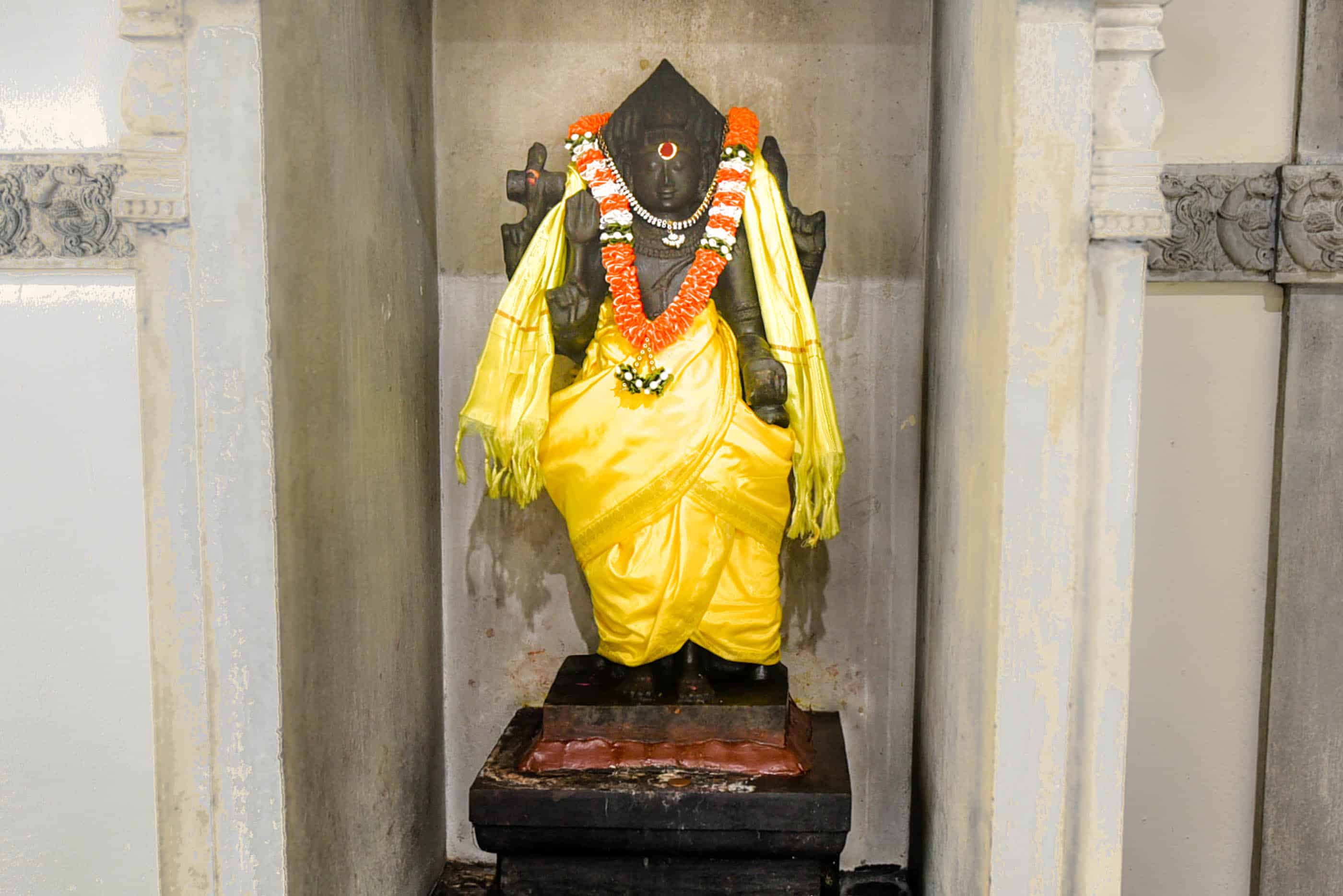
Kala Bhairava, the fierce aspect of Lord Shiva, is the destroyer of all destroying Time (Maha Kala), over sees the march of the mysterious time, ( not only human life but also countries and planets as well), ensuring the evanescence of all phenomena. Kala bhairava is one of the eight Bharaiva fierce manifestations of Lord Shiva. Eight manifestations of kala Bhairava are said to guard the eight spatial directions and the abode of Lord Shiva. The eight manifestations, are Kala Bhairava, Asitanga Bhairava, Samhara Bhairava, Ruru Bhairava, Krodha Bhairava, Kapala Bhairava, Rudra Bhirava and Unmatta Bhairava. Kala Bhairava is worshipped as ksetra pala, the guardian deity of a temple complex.
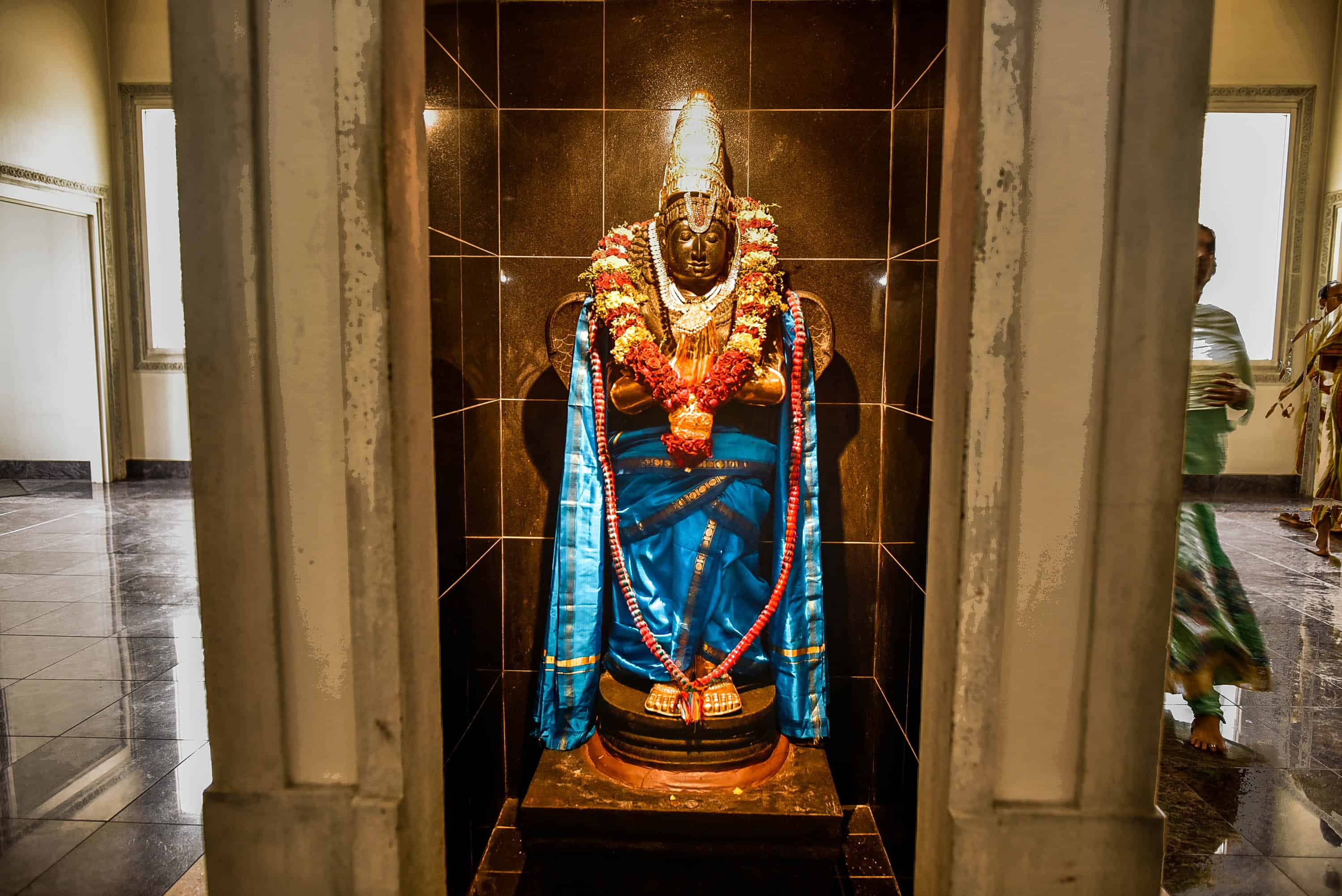
The temple of Garuda (also called Garudalwar), is directly opposite the presiding deity in the Sri Venkateswara swamy temple. Garuda is a faithful devotee of the Lord and he stands with his hands joined in supplication (the Anjali pose). Being the Lord’s mount he is shown with outstretched wings, ever ready to carry him. Garuda’s links to Vishnu – the Hindu god who fights injustice and destroys evil in his various avatars to preserve dharma, has made him an iconic symbol of king’s duty and power, an insignia of royalty or dharma. His eagle-like form is shown either alone or with Vishnu, signifying divine approval of the power of the state. You will find Garuda’s image not only in the shrine but also at the corners of the prakarams, mandapams and vimanas. At the commencement of the annual Brahmotsavam of Lord Sri Venkateswara, a flag with the image of Garuda is hoisted on the Dhwajasthamba. An utsava murti of Garuda is kept in the ICCT Vahana sala along with other Vahana’s.
Festivals –Garuda Vahana Seva in Brahmotsavam